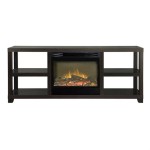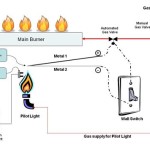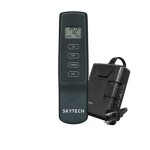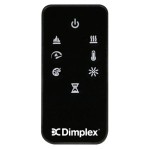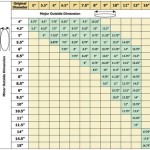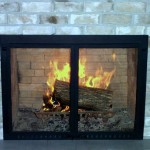Century Heating Wood Stove Fireplace Insert: A Comprehensive Overview
A Century Heating wood stove fireplace insert offers a practical and efficient heating solution for homeowners seeking to supplement or replace traditional heating systems. These inserts are designed to slide directly into existing masonry fireplaces, transforming an often inefficient open fireplace into a powerful and controllable heat source. Understanding the features, benefits, and considerations associated with these inserts is critical for making an informed purchasing decision.
The primary function of a Century Heating wood stove fireplace insert is to burn wood fuel and radiate heat into the surrounding living space. Unlike an open fireplace, which loses a significant portion of its heat up the chimney, a wood stove insert is designed for greater efficiency and controlled combustion. This efficiency translates to lower fuel consumption, reduced heating costs, and a smaller environmental footprint. The inserts also offer enhanced safety features compared to open fireplaces, minimizing the risk of sparks and embers escaping into the room.
Key Benefits of Century Heating Wood Stove Fireplace Inserts
Several compelling benefits contribute to the popularity of Century Heating wood stove fireplace inserts. These advantages include improved heating efficiency, ease of installation (in many cases), enhanced safety, and the aesthetic appeal of a traditional wood-burning fire.
The high efficiency ratings associated with these inserts stem from their controlled combustion design. Features such as air controls, baffle systems, and insulated fireboxes ensure that wood burns more completely, extracting maximum heat from each piece of fuel. This controlled burn also reduces the amount of smoke and creosote produced, leading to cleaner emissions and less frequent chimney cleaning. Moreover, many models feature a blower system that circulates heated air into the room more effectively, distributing warmth evenly throughout the living space. Without a blower, much of the generated heat remains trapped within the firebox and chimney.
Installation typically involves sliding the insert into the existing fireplace opening and connecting it to the chimney using a stainless steel liner. While some homeowners choose to tackle the installation themselves, professional installation is often recommended to ensure proper connection, venting, and safety compliance. Proper installation is essential for preventing carbon monoxide leaks and ensuring optimal performance. The cost of professional installation should be factored into the overall budget when considering a wood stove fireplace insert.
Safety is a paramount concern when operating any wood-burning appliance. Century Heating wood stove fireplace inserts are designed with safety features such as a sealed firebox and a door with a secure latch. These features prevent sparks and embers from escaping into the room, reducing the risk of fire hazards. Additionally, the inserts are typically tested and certified to meet stringent safety standards, providing peace of mind for homeowners. Regularly inspecting and maintaining the insert and chimney system is crucial for ensuring continued safe operation.
Factors to Consider Before Purchasing
Before investing in a Century Heating wood stove fireplace insert, several key factors should be considered to ensure that the selected model meets the homeowner's specific needs and circumstances. These factors include the size of the area to be heated, the existing fireplace dimensions, local building codes and regulations, and the availability and cost of wood fuel.
The heating capacity of a wood stove insert is typically measured in British Thermal Units (BTUs). It is essential to select a model with a BTU output that is appropriate for the size of the space to be heated. An undersized insert will not effectively heat the room, while an oversized insert can overheat the space and lead to inefficient operation. Consulting a qualified heating professional can help determine the appropriate BTU output for a specific home.
The dimensions of the existing fireplace opening are critical for ensuring that the chosen insert will fit properly. Measure the height, width, and depth of the fireplace opening accurately before selecting an insert. Allow for adequate clearance around the insert for proper ventilation and heat dissipation. Some inserts may require minor modifications to the fireplace opening to ensure a proper fit. Manufacturers provide detailed specifications and sizing charts for their products to assist in this process.
Local building codes and regulations often govern the installation and operation of wood-burning appliances. It is essential to obtain any necessary permits and to comply with all applicable codes before installing a wood stove fireplace insert. These codes may address issues such as chimney height, clearances to combustible materials, and carbon monoxide detector requirements. Contacting the local building department can provide clarity on the specific requirements in a given area.
Maintenance and Operation
To ensure optimal performance, longevity, and safety, regular maintenance and proper operation of a Century Heating wood stove fireplace insert are essential. This includes regular chimney cleaning, inspection of the insert components, and proper wood-burning techniques.
Chimney cleaning is perhaps the most critical aspect of wood stove maintenance. Creosote, a flammable substance, accumulates in the chimney as a byproduct of wood combustion. Regular cleaning removes this creosote buildup, reducing the risk of a chimney fire. The frequency of chimney cleaning depends on the type of wood burned and the operating habits of the stove, but annual professional cleaning is generally recommended.
Regular inspection of the insert components is also important. Check the door gasket for leaks, inspect the baffle system for damage, and clean the glass door regularly. Addressing minor issues promptly can prevent them from escalating into more significant problems. Consult the owner's manual for specific maintenance recommendations for the selected model.
Burning dry, seasoned wood is crucial for efficient and clean combustion. Wet or unseasoned wood produces more smoke and creosote, reducing heating efficiency and increasing the risk of chimney fires. Store wood in a dry, well-ventilated area for at least six months before burning it. Avoid burning treated wood, painted wood, or other materials that can release harmful chemicals into the air.

Century Heating Small Wood Burning Insert Cw2500

Century Heating Cw2100 Wood Burning Insert

Century Heating Cw2900 Wood Burning Insert

Century Heating Cw2900 Wood Insert Cb00022 L Fire Pit Surplus

Century Heating Large Wood Burning Insert Cw2900

Century Heating Fw2800 Wood Burning Stove

Century Heating Cw2900 Trio 25 Wood Burning Insert With Faceplate Cb0 Renovation Reserve

Stoves Wood Century Heating Fw3500 Stove Cb00024

Choosing And Installing Our Wood Burning Stove Salt Rook

Century Heating Fw3200 Epa Certified 2 300 Sq Ft Wood Stove On Pedes Factorypure
Related Posts


